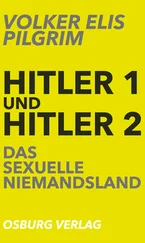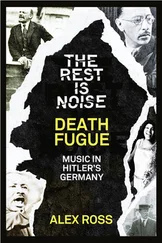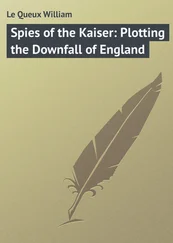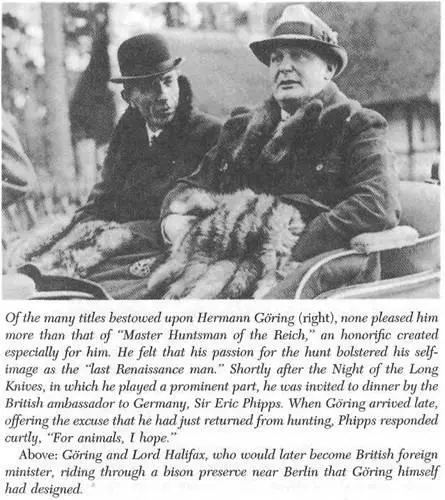
With this piece of encouragement ringing in his ears, Papen delivered a dramatic speech (written for him by the conservative writer Edgar Jung) at the University of Marburg on June 17, 1934. As if he had not been partially responsible for government decisions all along, Papen spoke out against the spread of violence, the extremism of the Nazis, the scramble for sinecures and easy money, the suppression of free speech, the mania for Gleichschaltung, and the “unnatural, totalitarian demands” of the state. Hitler was dismayed and bewildered for a fleeting moment, apparently assuming that the rather careless Papen had blurted out the details of a secret agreement that was being forged by the president, the Reichswehr, and the still influential conservative forces. There is much evidence to suggest that this was the moment Hitler finally decided to deal with the SA.
Feverishly but with great calculation, the stage was set for Röhm’s demise. Public warnings were issued almost daily to those who advocated a “second revolution.” The Reichswehr was tipped off that the SA seemed to be planning an operation. Secret but widely circulated reports advised that the brownshirts were on the verge of staging a revolt. Leading politicians from the Weimar Republic, such as Heinrich Brüning and Kurt von Schleicher, who had preceded Hitler as chancellor, were quietly advised to disappear for a few days or, better yet, to leave Germany entirely. The command posts of certain military districts were informed that, whatever happened, the SS would be on the side of the legal authorities and should be furnished with weapons, if necessary. Once again, a “hit list” of the SA made the rounds, landing on the desks both of Reichswehr officers and of some of those whose names it featured prominently. In the middle of the cleverly orchestrated agitation stood the unsuspecting Ernst Röhm, who had just completed arrangements to send his units on their regular leave. On June 29, 1934, the evening before the summer holidays were to begin, SA units in some cities were put on routine alert. Their commanders checked their readiness for action and sent them out to protest on the streets.
In the early morning hours of June 30 death squads began to fan out. Trucks of SS men and police roved the streets of Berlin, cordoning off the Tiergarten district, which housed the SA leaders’ quarters as well as Papen’s office on Vossstrasse. Hitler himself went to Bad Wiessee, where Röhm was holding a congress of SA leaders, and arrested him in his bed. Together with other SA commanders, Röhm was taken to the prison in Stadelheim. The executions began that morning, both there and in the SS barracks in Berlin-Lichterfelde. To lake advantage of the “unique opportunity,” as one participant phrased it, the hit list was expanded to include not only alleged “SA plotters” but also erstwhile opponents of the regime, including the circle around Papen and a number of leading conservatives. Exemplary terror would teach all such people to refrain from any hint of revolt.
General Schleicher, who had turned a deaf ear to various warnings, was shot in his apartment in Neu-Babelsberg, together with his wife. One of his closest associates, General Ferdinand von Bredow, the former chief of the Bureau of Ministers in the Ministry of Defense, was also slain, as were Edgar Jung, Erich Klausener (the head of Catholic Action), and many others. At around 9:00 a.m., three Gestapo officials accompanied by thirty SS men stormed into Papen’s offices. They searched the rooms, finally discovering Herbert von Bose, the head of the press office and a close associate of Papen. They asked him his name and then, without another word, shot him. All this was done without judicial proceedings, judgments, or the slightest semblance of legality. Hitler seemed intent, in fact, on delivering these blows completely in the open so as to leave a deep and abiding impression, as if proclaiming from the rooftops his immutable will and the earnestness of his statement on the evening of January 30, 1933, as he entered the Reich Chancellery, that no power on earth would ever dislodge him alive. 17
* * *
The public was horrified by the butchery, which continued into the evening of July 1. People seemed to realize instinctively that a line had been crossed. Leaders who permitted-or indeed engineered-such abominations were clearly capable of even more disturbing and frightful deeds. These fears were mitigated, however, by a sense of relief that the depredations of the SA, and the threat of chaos and mob rule that it embodied, had come to an end. For a brief moment a tear had appeared in the veil of the “legal revolution,” revealing a Hitler stripped of middle-class airs, a man whose thirst for power knew absolutely no bounds. But a public relations campaign was immediately launched to calm the waters, and soon the public was prepared to dismiss the two days of massacres as representing “the [Nazi] movement’s sowing the last of its wild oats” and the triumph of Hitler’s forces of order over the savage energies unleashed by any revolution.
Nevertheless, Hitler’s power hung in the balance for a time. Everything depended on how the Reichswehr would react. Certainly it had participated in the intrigue against Röhm; it had been more complicit and had provided far more assistance than its good name would allow. The ensuing bloodbath, however, far exceeded anything it had imagined and clearly violated the most basic legal norms. If the social order had truly been under the threat of an imminent uprising by the SA, as Blomberg claimed in an attempt to justify Hitler’s action, then the Reichswehr would have been duty-bound to intervene; but everyone knew that this was not the case. If the social order was not threatened, then the army should have acted to put down the lawless outburst. Instead the Reichswehr had fanned the conflict and helped bring it to a head, making weapons available and finally giving the SS free rein, all to ensure its own victory.
Uncertainty about the reaction of the Reichswehr was not the least of Hitler’s reasons for leaving Berlin immediately after the massacre and lying low for a while. Not until ten days later did he surface and return to the capital. After all, two generals-former chancellor Kurt von Schleicher and Ferdinand von Bredow-had been murdered in the wave of violence. No self-respecting army, let alone an officer corps that believed it had a right to participate in the affairs of state, could let such acts pass without account. In a tense and often contradictory speech before the Reichstag on July 13, 1934, Hitler offered the official explanation that Schleicher had been in contact with the ambassador of a foreign power, an assertion that failed to convince or satisfy anyone.
A few senior officers, including Erich von Manstein, Gerd von Rundstedt, and even Erwin von Witzleben (who had greeted the news of the murder of the SA leaders with a curt “Splendid!” 18) insisted that a court-martial be convened to investigate the charge. Blomberg mollified them with the promise that proof would soon be provided. But the results of the investigation were suppressed, and there the situation remained. Eventually, in response to the concerns voiced by a few other officers, General Werner von Fritsch (who had, in the meantime, relieved Hammerstein as commander in chief of the army) demanded an explanation of Blomberg. But the minister evaded the issue, and in the end Fritsch allowed it to die.
These evasions and prevarications on the part of the minister of defense were rooted, of course, in his own complicity. Blomberg had even approved the orders for General Schleicher’s “arrest,” while Reichenau formulated the official announcement that Schleicher was shot while resisting arrest (an assertion disproved by the criminal investigation). 19As chief of army command, Fritsch may well have felt that he could not afford to expose his political superiors; as the sources unanimously show, however, like most other senior officers he was horrified by the bloodbath despite feeling satisfaction at the taming of the SA.
Читать дальше
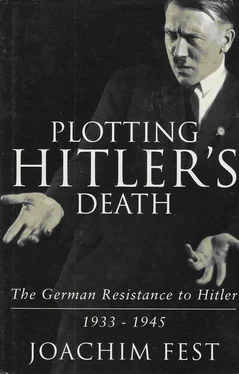

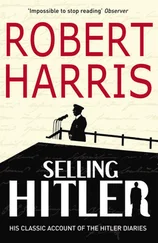
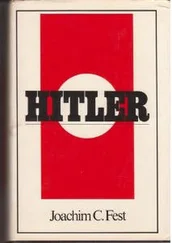
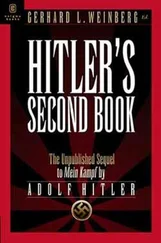
![Traudl Junge - Hitler's Last Secretary - A Firsthand Account of Life with Hitler [aka Until the Final Hour]](/books/416681/traudl-junge-hitler-s-last-secretary-a-firsthand-thumb.webp)

